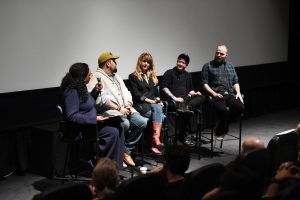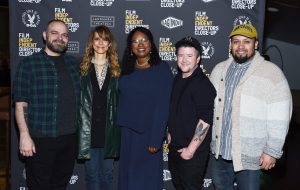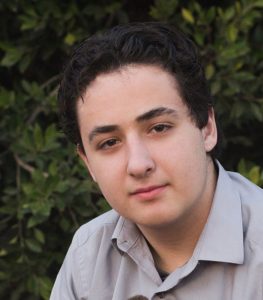2020 Film Independent’s Director’s Close Up: Week Three

Week Three of Film Independent’s Director’s Close Up ventures into the mysterious world of television. Unlike feature films, television has directors with little authority, writers with all the power and story arcs that can last decades. Directors Kyle Patrick Alvarez (The Stanford Prison Experiment, 13 Reasons Why), Silas Howard (Pose, This is Us), Marvin Lemus (Gentefield) and Lynn Shelton (Humpday, The Morning Show, Glow) reveal what happens behind the camera of the most popular television shows.
The role of the director in film contrasts with television directors. In feature films, the director has unlimited creative authority in every single department. In television, some directors may experience a limited amount of authority, but many cannot adjust the script in any way or have little control of the final edit of the episodes.

Directors will often direct a single episode while crew members, writers, and producers generally stay on the same show for years. Silas Howard compared it to “throwing a party at someone else’s house” and moderator Wendy Calhoun compared it to the relationship between a substitute and a teacher. To help get to know the crew, some directors will greet and speak with every member of the crew or utilize unconventional methods such as bringing the crew candy or baked goods (which, according to the panel, has an impressive success rate). To help initiate directors, “shadowing” sometimes occurs wherein a possible future director will “shadow” the current director to learn the feel for the production and style of the show.
The show writers have so much creative influence that the medium has become known as the “writer’s medium.” The writers ensure that, not only does each episode have an interesting, entertaining and original story, but that the world maintains consistency throughout every episode as well. For some shows, this becomes more complicated when writers must also consider overarching intertwining subplots such as the highly acclaimed Game of Thrones, which throughout its seven seasons had dozens of plot lines with dozens of characters that ranged from a few episodes long to multiple seasons long.

To assist in production, writers create “show bibles” that give basic information on the characters, settings and other aspects of the world being portrayed. Sometimes, the production also creates “look books” which use a series of photographs, color pallets and more to convey the tone of the show. Showrunners, which lead the production of a show, meet with directors to discuss each episode in meetings called “tone meetings,” that can last as long as nine hours.

Recently, the world of television has begun to lose its strangeness as film and TV have merged more and more. Filmmakers now create “cinematic universes” which resemble the styles of TV and TV networks such as HBO develop shows where each episode can last over an hour and the greater show-wide plot has a large singular central conflict, similar to most feature film plots. Perhaps eventually it will be the world of film that seems mysterious, as television and instant streaming shows grow in popularity worldwide.
For more information on Film Independent, go to https://www.filmindependent.org/
By Gerry O., KIDS FIRST! Film Critic, Age 17

